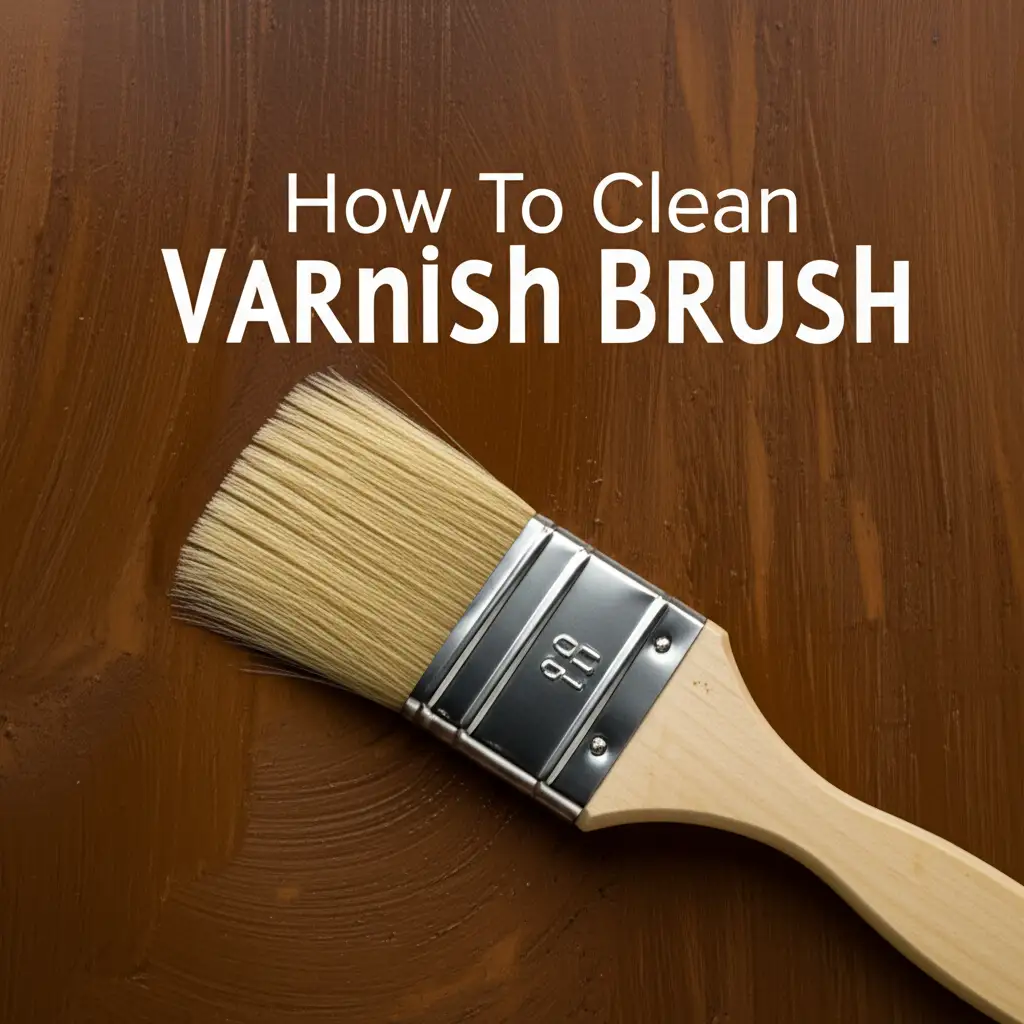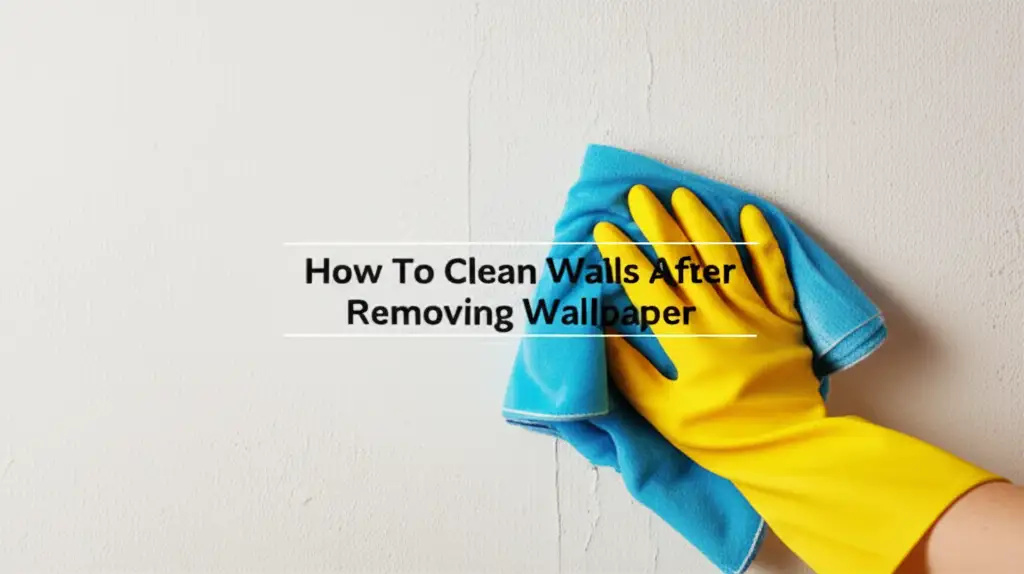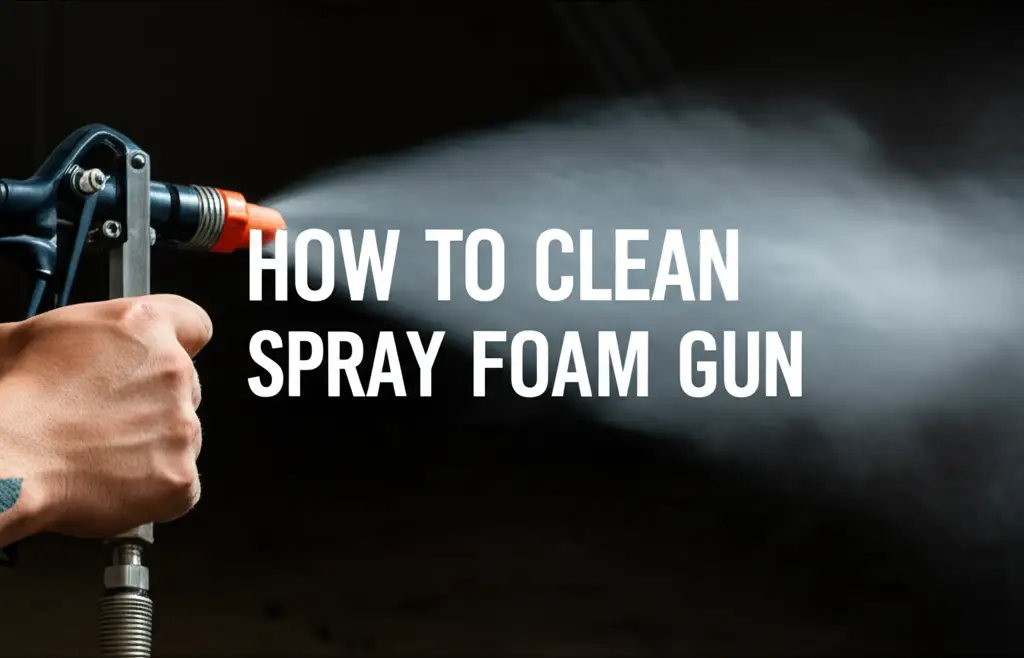· Home Improvement · 13 min read
How To Clean Varnish Brush

Effective Methods to Clean Varnish Brushes
Using a varnish brush helps you achieve smooth, even coatings on wood and other surfaces. However, a great finish needs a clean brush. If you do not clean varnish brush tools properly, bristles become stiff and useless. This reduces your brush’s lifespan and impacts your work quality.
Learning how to clean varnish brush tools extends their life. It also ensures you get beautiful results on every project. A well-maintained brush applies varnish evenly without streaks or clumps. This guide explores specific steps to clean varnish brush types based on the varnish formula. You will discover the right tools and techniques. We also cover drying, storage, and common troubleshooting tips. I will help you keep your brushes in top condition.
Takeaway
- Clean varnish brushes immediately after use.
- Match cleaning solvent to varnish type (water for water-based, mineral spirits for oil-based).
- Work the cleaner through all bristles thoroughly.
- Rinse brushes until water runs clear.
- Condition bristles to keep them soft and pliable.
- Dry brushes completely and reshape them.
- Store brushes properly to maintain their shape.
To clean a varnish brush, immediately remove excess varnish. Use water for water-based varnish. For oil-based varnish, use mineral spirits or paint thinner. Rinse thoroughly. Condition the bristles. Hang the brush to dry completely. Store it flat or in its original cover.
Understanding Varnish Types for Proper Cleaning
Knowing the type of varnish you use is the first step to proper brush cleaning. Varnish types dictate the solvent needed for effective cleaning. Using the wrong cleaner can damage your brush or leave it sticky. I always check the varnish label before I begin cleaning.
Varnish typically falls into two main categories: water-based or oil-based. Water-based varnishes are generally easier to clean. They often contain acrylics and clean up with water. Oil-based varnishes, like polyurethane or spar varnish, need stronger solvents. These varnishes dry through chemical reactions and need specific cleaners.
Different varnish types demand specific cleaning agents. Water-based varnishes typically clean up with warm water and soap. Oil-based varnishes require mineral spirits, paint thinner, or even lacquer thinner for tough cases. Using the correct cleaner prevents bristles from hardening. It also ensures the varnish fully dissolves from the brush.
You will need a few basic tools to clean varnish brush effectively. Gather old newspapers or cardboard to protect your work area. Have a few clean rags or paper towels ready for wiping. You will also need suitable containers for cleaning solutions and rinsing water. Always ensure good ventilation, especially when using strong solvents.
Immediate Action: Cleaning Varnish Brushes Right After Use
The most critical rule for cleaning varnish brushes is to clean them immediately. Do not let varnish dry on your brush. Dried varnish becomes incredibly difficult to remove. It can ruin your brush quickly.
As soon as you finish varnishing, wipe off as much excess varnish as possible. Use the edge of the varnish can or an old newspaper. This simple step reduces the amount of varnish you need to clean from the bristles. It makes the rest of the cleaning process much faster. I always do this first before anything else.
For water-based varnish, move to a sink right away. Rinse the brush under warm running water. Gently work the bristles with your fingers. Continue rinsing until no more varnish color comes out. This initial rinse removes the bulk of the water-based product easily.
If you use oil-based varnish, prepare your cleaning solvent immediately. Pour a small amount of mineral spirits or paint thinner into a container. Dip the brush into the solvent. Swirl it around gently to dislodge the varnish. Press the brush against the bottom and sides of the container. This helps release varnish from deep within the bristles.
Having your cleaning supplies ready before you start varnishing saves time. This readiness ensures you can clean brushes promptly. Always protect your skin with gloves when handling varnishes or solvents. Proper preparation makes the cleaning process efficient and safe.
Deep Cleaning Water-Based Varnish Brushes
Deep cleaning water-based varnish brushes is a straightforward process. You do not need harsh chemicals. Warm water and soap are usually sufficient. This method keeps your brushes soft and ready for the next project.
First, after the initial rinse, fill a small container with warm water. Add a few drops of mild dish soap to the water. Swirl the brush in the soapy water. Gently work the soap into the bristles with your fingers. Make sure the soap penetrates all the way to the ferrule. The ferrule is the metal band that holds the bristles.
Continue working the soap through the bristles. You will see more varnish coming out into the water. If the water becomes very cloudy, pour it out and refill with fresh soapy water. Repeat this process until the water remains clear after agitating the brush. This indicates most of the varnish is gone.
Next, rinse the brush thoroughly under clean, running water. Hold the brush with the bristles pointing down. This prevents water from entering the ferrule. Water trapped in the ferrule can weaken the glue over time. Continue rinsing until no suds or varnish residue are visible. Ensure the water runs completely clear from the bristles.
For any stubborn spots, you can use a brush comb. Gently comb through the bristles while rinsing under water. This helps separate bristles and remove any lingering varnish. A brush comb is a handy tool for maintaining brush shape. It also ensures a complete clean. If you are also cleaning brushes that have seen polyurethane, the principles are very similar to cleaning varnish brushes, especially for water-based types. You can find more details on how to clean polyurethane off brush by following our dedicated guide.
Deep Cleaning Oil-Based Varnish Brushes
Deep cleaning oil-based varnish brushes requires more attention. These varnishes are tough. They need specific solvents to break down. This process ensures your brushes remain functional.
Start by pouring a sufficient amount of mineral spirits or paint thinner into a metal or glass container. Never use plastic as some solvents can melt it. Dip the brush into the solvent. Work the solvent deep into the bristles. Swirl the brush around. Press it against the bottom of the container. This action helps dislodge the sticky varnish from within the brush.
Repeat the solvent wash several times. After each wash, squeeze the excess solvent from the brush. Then, use a clean rag to wipe off more varnish residue. You will notice the solvent changing color as it picks up the varnish. Continue this process until the solvent runs mostly clear from the brush. This shows the bulk of the oil-based varnish is removed.
After the solvent washes, you need to clean the brush with soap and water. This removes any lingering solvent and varnish residue. Use warm water and mild dish soap. Work the soap into the bristles. Lather thoroughly. Rinse under running water until no more solvent smell or soap remains. This step helps condition the bristles. It prevents them from drying out too much from the strong solvents.
Always ensure good ventilation when working with mineral spirits or paint thinner. These solvents have strong fumes. Open windows or work outdoors. Wear chemical-resistant gloves to protect your hands. Properly dispose of used solvents according to local regulations. If you also work with stains, you will find these methods very helpful. Learn more about how to clean brush after staining to keep all your coating brushes in top shape. Additionally, if you need to tackle specific stain mishaps, our guide on how to clean stain off a brush offers further assistance.
Restoring and Conditioning Your Varnish Brushes
Cleaning is only half the battle. Restoring and conditioning your varnish brushes is crucial. This step brings softness back to the bristles. It also helps them maintain their shape. A well-conditioned brush performs better.
After cleaning and rinsing, the bristles might feel a little stiff or dry. This is especially true for brushes used with oil-based varnishes and strong solvents. A good conditioner helps restore their natural pliability. You can buy specialized brush conditioners from hardware stores. These products are designed to rehydrate bristles.
If you do not have a specific brush conditioner, some common household items work well. A small amount of fabric softener or hair conditioner can be effective. Mix a tiny bit with warm water. Dip the bristles into this solution. Work it through the brush. Let it sit for a few minutes. This allows the conditioner to penetrate the bristles.
After conditioning, rinse the brush lightly with clean water. Do not rinse out all the conditioner. A tiny bit left behind can benefit the bristles. Gently reshape the brush head with your fingers. Form the bristles back into their original chisel or flat shape. This step is important for maintaining precise application.
Sometimes, a brush might harden if varnish dries on it. You can try to revive a hardened brush. Soak it in the appropriate solvent for a longer period, sometimes overnight. Then, try to comb out the softened varnish. This does not always work completely. It is always better to clean immediately after use.
Drying and Storing Varnish Brushes for Longevity
Proper drying and storage are just as important as cleaning for your varnish brushes. Incorrect drying can cause bristles to warp or mildew. Poor storage can damage the brush shape. This shortens its useful life.
After cleaning and reshaping, hang the brush to dry. Use a clothesline with a clothespin or a specialized brush drying rack. Hanging ensures air circulates around all bristles. It also allows any remaining moisture to drip away. Gravity helps maintain the brush’s shape. This prevents water from collecting in the ferrule.
If hanging is not an option, lay the brush flat on a clean, absorbent cloth or paper towel. Make sure the bristles are not touching any surface that could deform them. Do not dry brushes upright in a container. This traps moisture in the ferrule. Trapped moisture can rust the metal band and rot the wooden handle.
Once completely dry, store your varnish brushes carefully. Many brushes come with a cardboard cover or sleeve. Keep this sleeve. It protects the bristles from dust and helps retain their shape. If you lost the sleeve, you can wrap the brush in paper or plastic wrap. This prevents accidental damage to the bristles.
Store brushes flat or hanging in a clean, dry place. Avoid storing them in areas with extreme temperature changes or high humidity. These conditions can damage the bristles or the handle. Proper storage ensures your brushes are ready for the next project. It also saves you money on replacements.
Troubleshooting Common Varnish Brush Cleaning Issues
Even with the best intentions, you might encounter issues when cleaning varnish brushes. These problems can seem frustrating. However, many have simple solutions. Knowing how to troubleshoot helps you save brushes.
Varnish Dried on Brush: This is a common problem if cleaning was delayed. For water-based varnish, try soaking the brush in warm, soapy water for several hours or overnight. For oil-based varnish, soak the brush in mineral spirits or paint thinner. Use a brush comb to gently work out the softened varnish. Repeat soaking and combing until the varnish is mostly gone. Sometimes, very hardened varnish means the brush is beyond saving.
Stiff Bristles After Cleaning: If your bristles feel stiff after drying, it usually means some varnish or solvent residue remains. It can also mean the bristles dried out. Rerun the brush through the deep cleaning process appropriate for its varnish type. Pay extra attention to working the cleaner through the ferrule. Then, apply a good brush conditioner. This rehydrates the bristles and makes them softer.
Frayed Brush Tips: Fraying often happens from improper cleaning or storage. It can also occur if you press too hard during application. While you cannot fully repair frayed bristles, you can minimize further damage. After cleaning, ensure you reshape the brush properly. Use the brush sleeve during storage. If the fraying is severe, the brush might not give a smooth finish. You might need to use it for rougher tasks or replace it.
When to Discard a Brush: Knowing when to throw away a brush is important. If the bristles are severely matted, hardened beyond repair, or falling out, it is time for a new brush. A damaged brush will leave streaks. It will not apply varnish evenly. Investing in new brushes ensures quality results. Remember, proper care helps brushes last longer.
FAQ Section
Q1: Can I use paint thinner to clean varnish brushes?
Yes, you can use paint thinner to clean varnish brushes, but only for oil-based varnishes. Paint thinner is a strong solvent that effectively dissolves oil-based varnish. Ensure you work in a well-ventilated area due to the strong fumes. Always follow up with a soap and water wash to remove all residue and condition the bristles.
Q2: How do I remove dried varnish from a brush?
To remove dried varnish, first identify if it’s water-based or oil-based. Soak water-based varnish brushes in warm soapy water. Soak oil-based varnish brushes in mineral spirits or paint thinner. Let the brush soak for several hours or even overnight. Then, use a brush comb to gently work out the softened varnish from the bristles.
Q3: Is it okay to use dish soap for cleaning varnish brushes?
Yes, dish soap is good for cleaning varnish brushes, especially for water-based varnishes. Use warm, soapy water after the initial rinse to remove all residue. For oil-based varnishes, use dish soap after you have cleaned the brush with mineral spirits or paint thinner. Dish soap helps remove solvent residue and leaves bristles clean.
Q4: How often should I clean my varnish brush?
You should clean your varnish brush immediately after every single use. Do not let varnish dry on the brush. Dried varnish is much harder to remove and can ruin the brush quickly. Prompt cleaning ensures your brush remains soft, flexible, and ready for your next project.
Q5: What is the best way to store varnish brushes?
After cleaning and drying, store varnish brushes in a way that protects their shape. The best method is to hang them bristles-down, allowing gravity to maintain their form. If hanging is not possible, store them flat. Use the original cardboard sleeve or wrap the bristles in paper to protect them from dust and damage.
Q6: Can I clean brushes used for shellac or lacquer with these methods?
No, shellac and lacquer require different solvents than varnish. Shellac brushes clean with denatured alcohol. Lacquer brushes need lacquer thinner. Using the wrong solvent will not effectively clean the brush. It can also damage the bristles. Always use the solvent recommended by the product manufacturer.
Conclusion
Cleaning your varnish brush correctly is a vital step for any painting or finishing project. We have covered the critical steps to effectively clean varnish brush tools. This includes identifying varnish types and using the right cleaning agent. Whether you are dealing with water-based or oil-based varnish, the principles remain clear. Immediate action after use is always the best strategy.
Remember, a clean brush not only performs better but also lasts significantly longer. By following these cleaning, conditioning, and storage tips, you ensure your brushes stay in prime condition. This saves you money in the long run. It also helps you achieve beautiful, professional-looking finishes every time. Give your brushes the care they deserve. Start applying these cleaning methods today. Your future projects will thank you for it.
- varnish brush cleaning
- brush care
- varnish removal




